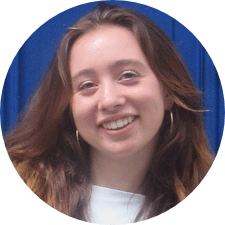Are you interested in learning about the lasting impacts of antiquity on heavy metal bands? Do you love learning about psychedelics? Or are you hoping to be the DJ at an upcoming social?
This semester, students looking to take advantage of the Open Curriculum can select from a handful of unique options to spice up their course schedule. From COST 0725: “Psychedelics in Religion, Science and Healing” to MCM 0700E: “Introduction to DJ Culture,” The Herald interviewed the professors of four courses that offer one-of-a-kind academic and interactive experiences.
In CLAS 0322: “Somewhere Back in Time: Archaeology, the Ancient World and Heavy Metal Music,” students will discuss how — and why — heavy metal artists incorporate history into their work.
“It’s always very good to question why an artist felt that bringing something historical into the modern world was something that they needed to do,” said Tyler Franconi, assistant professor of archaeology and the ancient world and classics and CLAS 0322 instructor. This will be Franconi’s second time teaching the course.
The course is organized chronologically, beginning with the influence of Ancient Egypt and ending with the Vikings, according to Franconi. Throughout the semester, students will be tasked with finding songs that connect to the course, which Franconi will then compile into a class playlist.
For the course’s final project, students are asked to create a mock lineup for a music festival that is grounded in a historical theme. Last year, one student created a festival themed entirely around the ancient wars between the Roman Republic and the Carthigian empire, Franconi recalled.
MCM 0700E: “Introduction to DJ Culture” will also explore music, but through a different lens. Assistant Professor of Modern Culture and Media madison moore hopes the course will help students “think with sound,” moore told The Herald.
“I see DJs as archivists — you’re constantly searching for new kinds of sounds,” moore said.
The course will draw on “histories and subcultures of electronic dance music, alongside theories of sampling, mixing, remixing and postproduction” to introduce students to the art of DJing, according to the syllabus.
For one assignment this semester, students will be asked to find an ambient noise — whether that be rain falling or cars honking — and edit it into a mix. Students’ mixes will then be listened to and discussed in whole-class critiques.
To conclude the course, moore wants students to perform a set list at a public event. Students will also exhibit their work in a class showcase at the end of the semester, according to the syllabus. This showcase will follow the style of Boiler Room, a global online music broadcaster.
For students interested in comparing Bob Dylan and Ralph Waldo Emerson’s influences on celebrity culture, Professor of History and Classics Kenneth Sacks hopes HIST 0658D: “Walden + Woodstock: The American Lives of Ralph Waldo Emerson and Bob Dylan” will satisfy this desire.
Though separated by nearly a century, both Dylan and Emerson were “not famous for being famous — they were famous because they were great,” Sacks said. He hopes that after taking this course, students will learn to appreciate the difference.
Each week, the course will focus on a different aspect of Dylan and Emerson’s careers — ranging from abolition to Dylan’s controversial transition to performing with electric instruments — through readings, music, reporting and other media. The course will conclude with a final project in which students can choose between two assignment options: an essay comparing the roles of Dylan and Emerson or a hypothetical dialogue between the two. In every iteration of the course since this final assignment was created, all students have chosen the second option, according to Sacks.
As a historian, Sacks says he hopes the course will sharpen students’ critical thinking skills. But beyond academics, he wants his students to learn to listen and “be present” in their lives, Sacks said.
HIST 0658D isn’t the only course being offered this semester that compares themes from the past and present. In COST 0725: “Psychedelics in Religion, Science and Healing,” Visiting Assistant Professor of Contemplative Studies Nicholas Canby will contrast the historical use of psychedelics — a group of hallucinogenic drugs — in religious or shamanic settings with the recently popularized use of these drugs as psychiatric treatments in the Western world.
In papers throughout the semester, students will examine both the cultural meaning of these psychedelics in a certain region of the world and the neuroscience behind them.
At the end of the course, Candy hopes students will have a “wider and more nuanced perspective on what psychedelics are,” he said.

Hadley Carr is a university news editor at The Herald, covering academics & advising and student government.





